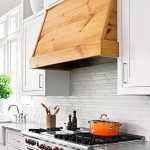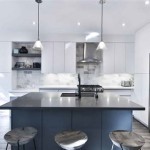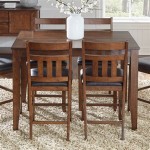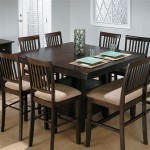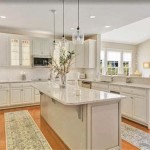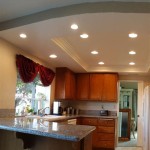Brown Paint Colors for Kitchen
Brown, a color often associated with nature, warmth, and stability, offers a versatile palette for kitchen design. Its various shades, from deep chocolate to light taupe, can create a range of moods and complement various design styles. This article explores the nuances of brown paint colors, offering insights into their application and impact in the kitchen environment.
The psychology of color plays a significant role in how a space is perceived. Brown, with its grounding and earthy qualities, can foster a sense of comfort and security in the kitchen. Lighter browns tend to create a more open and airy feel, while darker browns evoke a sense of richness and sophistication. The specific shade chosen can significantly influence the overall atmosphere of the room.
When selecting a brown paint color for the kitchen, consideration should be given to the existing elements within the space. Cabinetry, countertops, flooring, and appliances all contribute to the overall color scheme. For example, kitchens with lighter cabinets and countertops may benefit from a darker brown accent wall to add depth and visual interest. Conversely, kitchens with darker cabinetry may be enhanced by lighter brown walls to create balance and prevent the space from feeling overly closed in.
Natural light also plays a crucial role in how paint colors appear. Kitchens with ample natural light can accommodate darker brown shades without appearing dim. In contrast, kitchens with limited natural light may benefit from lighter brown hues to maximize brightness. Testing paint samples in the actual kitchen space is recommended to accurately assess how the color interacts with the existing light conditions throughout the day.
Various shades of brown offer distinct aesthetic qualities. Chocolate brown, a rich and deep hue, exudes elegance and sophistication. It pairs well with cream or white accents, creating a classic and timeless look. Coffee brown, a slightly lighter shade, offers warmth and versatility, complementing a range of design styles from traditional to contemporary.
Taupe, a lighter shade of brown with grey undertones, provides a neutral backdrop that can easily adapt to various design elements. It creates a sense of calm and serenity, making it a popular choice for kitchens seeking a minimalist or contemporary aesthetic. Beige, a warm and inviting shade, offers a similar versatility to taupe while adding a touch of subtle warmth to the space.
For those seeking a more vibrant option, terracotta brown offers a warm and earthy tone with hints of orange and red. This shade can inject a sense of energy and vibrancy into the kitchen, particularly when paired with natural materials like wood and stone.
Beyond solid colors, brown can be incorporated into the kitchen through various paint techniques. A brown glaze applied over existing cabinetry can add depth and dimension, transforming plain cabinets into a focal point. Strié, a decorative painting technique that creates a subtle striped effect, can add visual texture and interest to walls or furniture.
Brown can also be effectively used as an accent color. A brown backsplash can provide a striking contrast against lighter countertops and cabinets. Brown painted island bases offer a grounding element within the kitchen, anchoring the space and creating a visual focal point. Open shelving painted in a contrasting shade of brown can add a touch of personality and visual interest.
The combination of brown with other colors can further enhance the aesthetic appeal of the kitchen. Brown and white create a classic and timeless pairing, offering a balance of warmth and brightness. Brown and blue offer a more contemporary feel, with the cool tones of blue balancing the warmth of brown. Brown and green, inspired by nature, create a harmonious and calming atmosphere.
When incorporating brown paint into a kitchen design, it's essential to consider the desired overall aesthetic. For a modern and minimalist look, lighter shades of brown, such as taupe or beige, paired with clean lines and sleek surfaces can create a sophisticated and uncluttered space. For a more traditional or rustic aesthetic, darker shades of brown, like chocolate or coffee, combined with natural wood and textured surfaces, can evoke a sense of warmth and comfort.
Ultimately, the choice of brown paint color for a kitchen is a personal one, reflecting individual preferences and design goals. By carefully considering factors such as existing elements, natural light, and desired atmosphere, one can select a brown hue that enhances the functionality and aesthetic appeal of the kitchen space, creating a welcoming and inviting environment for cooking, dining, and gathering.
Regular maintenance of painted surfaces is essential to preserve their appearance. Cleaning painted walls and cabinets with a mild detergent and warm water can remove grease and grime. Touch-ups may be necessary to address minor scratches or chips, preserving the integrity of the painted finish. Proper ventilation during and after painting is crucial to ensure proper drying and minimize fumes.
Colors That Bring Out The Best In Your Kitchen Decorating Home Garden Television Brown Cabinets Cabinet Design Wall
The Walls Are Beamin Moore Rockies Brown Cabinets Linen Sand And Grumbacher Van Dyck Glaz Cozinhas Decoração De Casa
Easy Kitchen Color Ideas Colorfully Behr Blog
Best Paint Colors For Kitchens With Dark Cabinets Jenna Kate At Home
Best Kitchen Paint Colors Ultimate Design Guide Brown Cabinets Cabinet Color Schemes Kitchens
9 Paint Colors That Go With Brown Furniture Paintzen
12 Best Brown Paint Colors For Living Rooms
Warm Kitchen Color Schemes

What Colors Go With Brown 12 Flawless Pairings We Can T Get Enough Of Cabinets Dark Bathroom

35 Kitchen Color Schemes For 2024 Cabinet Kings

